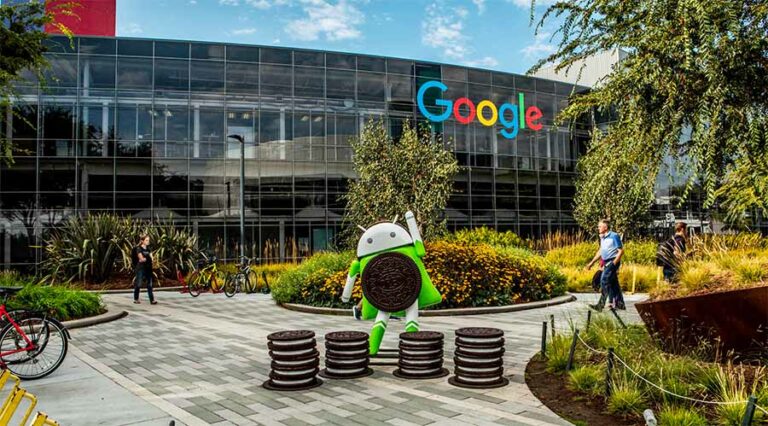Teaching effectively hinges on the application of tried-and-true strategies and techniques in teaching to engage and empower learners. In this article, we will delve into seven essential methods to elevate your teaching abilities.
Whether you’re a seasoned educator or a newcomer, these insights will help you create an enriching learning experience for your students, fostering their growth and understanding. Join us as we explore the critical elements of successful teaching.
Strategy 1: Clear Learning Objectives
Clear objectives are essential in teaching, offering students guidance, and aiding educators in assessing progress.
How to Formulate Specific Learning Outcomes
Formulating specific learning outcomes is a crucial part of effective teaching. Here’s a concise list of steps to guide you:
- Start with clarity: Clearly define what you want your students to learn.
- Be specific: Focus on one key concept or skill per outcome.
- Use action verbs: Begin each outcome with a measurable action verb like “demonstrate,” “analyze,” or “create.”
- Make it measurable: Ensure outcomes are observable and assessable.
- Align with goals: Connect outcomes to course objectives or broader educational goals.
- Be realistic: Set achievable expectations based on students’ abilities and the course level.
- Consider the context: Account for the course’s content, teaching methods, and assessment tools.
These steps will help you craft specific, measurable, achievable learning outcomes that enhance teaching effectiveness.
Examples of Effective Learning Objectives
Crafting practical learning objectives is crucial for focused and measurable teaching. Here are five exemplary objectives:
- By the end of the course, students will be able to analyze and critique critical theories in psychology, demonstrating their understanding through written essays and discussions.
- Upon completing this workshop, participants will have the skills to design and deliver an engaging presentation, incorporating visual aids and effective communication techniques.
- After this training program, employees will demonstrate proficiency in using the company’s software to streamline data analysis and reporting, reducing processing time by 20%.
Strategy 2: Active Learning
Active learning engages students in hands-on activities, fostering critical thinking and knowledge retention through techniques like discussions and problem-solving exercises.
Techniques to Promote Active Engagement
Active engagement is at the core of effective teaching, igniting students’ curiosity and involvement in the learning process. Here are five concise techniques to promote active engagement in your classroom:
- Think-Pair-Share: Encourage students to think independently, discuss ideas with a partner, and then share their thoughts with the class.
- Peer Teaching: Assign students to teach a concept or topic to their peers, reinforcing their understanding and encouraging collaboration.
- Case Studies: Present real-world scenarios or problems, prompting students to analyze, discuss, and propose solutions.
- Flipped Classroom: Have students review course materials independently before class, using class time for discussion, application, and deeper exploration.
- Group Projects: Assign collaborative projects that require teamwork, research, and problem-solving, fostering active participation and shared responsibility.
These techniques empower students to engage with the subject matter actively, enhancing their learning experience.
Benefits of Active Learning in Teaching
Active learning offers numerous benefits for educators and students alike. Here are four key advantages:
- Improved retention of material
- Enhanced problem-solving skills
- Increased student engagement
- Personalized learning experiences

Strategy 3: Effective Communication
Effective teaching communication involves precise, comprehensive delivery of information through words, non-verbal cues, and visual aids to foster understanding and rapport with students.
Tips for Clear and Concise Communication
Clear and concise communication is a cornerstone of effective teaching. Here are four essential tips to help you convey information in a way that enhances understanding and engagement in the classroom:
- Simplify Language: Use plain and straightforward language to ensure your message is easily digestible.
- Organize Content: Present information logically, using headings and bullet points for clarity.
- Encourage Questions: Create an open and inclusive environment where students feel comfortable asking for clarification.
- Provide Visual Aids: Incorporate visuals, such as diagrams or charts, to reinforce key points and make complex concepts more accessible.
Overcoming Common Communication Challenges
Common challenges can hinder effective communication in teaching. Here are four strategies to help you overcome these obstacles and promote more precise interactions with your students:
- Active Listening: Actively listen to students to understand their questions or concerns fully.
- Non-Verbal Communication: Be aware of your body language and gestures to ensure they align with your intended message.
- Clarification: Promptly address misunderstandings or confusion by encouraging students to seek clarification.
- Flexibility: Adapt your communication style to meet the diverse needs and learning preferences of your students.
Strategy 4: Assessment and Feedback
Assessment and feedback are cornerstones of effective teaching and learning. They play distinct but interconnected roles in the educational process, helping measure progress and guide improvement.
Assessment
Crucial in teaching, it helps gauge student understanding and inform teaching decisions.
Types of Assessment
- Formative Assessment: Involves quizzes, discussions, and peer assessments, offering real-time insights for teaching adjustments.
- Summative Assessment: Like final exams, it measures overall learning outcomes to assess course objectives.
Feedback
Feedback is a pivotal element in education, offering students and educators valuable insights. Here are fundamental principles to ensure feedback’s effectiveness and positive impact on the teaching and learning experience.
- Importance: Timely, constructive feedback is vital for student growth, fostering self-reflection and improvement.
- Effective Feedback: Feedback should be specific, actionable, and task-focused, emphasizing both strengths and areas for improvement.
- Feedback Loop: Encouraging student responses and questions creates an interactive learning environment.
- Continuous Improvement: Both educators and students can benefit from assessment and feedback, leading to better teaching and learning experiences.
Strategy 5: Adaptability and Differentiation
Adaptability and differentiation are crucial for meeting diverse student needs in education.
Adaptability:
- Diversity Recognition: Acknowledge varying learning styles, abilities, and backgrounds, adjusting teaching methods accordingly.
- Flexible Instruction: Be ready to adapt lesson plans on the fly to address unexpected challenges or opportunities.
- Customized Support: Provide tailored assistance to students based on their unique needs.
- Varied Resources: Offer a range of materials and activities to accommodate different learning preferences.
Differentiation:
- Content Variety: Present material in various formats and difficulty levels to suit diverse learning needs.
- Assessment Alignment: Ensure assessments match individualized learning objectives and students’ progress.
- Flexible Grouping: Utilize strategies like peer tutoring to create an inclusive classroom environment.
- Continuous Evaluation: Continuously assess and adjust differentiation methods to meet evolving student needs.
Adaptability and differentiation empower educators to create inclusive, effective learning environments that enable all students to succeed.
Strategy 6: Technology Integration
Technology integration in education is a multifaceted concept with various implications. Here, we focus on seven key aspects, highlighting its benefits and challenges.
- Benefits for Learning: Technology enhances educational experiences through access to vast information, interactive content, and personalized learning paths.
- Engagement: Interactive tools like educational software and gamification captivate students, making learning more enjoyable.
- Personalization: Technology allows tailoring learning experiences to individual students, addressing their unique strengths and weaknesses.
- Accessibility: It provides inclusive opportunities, enabling all students to access educational content effectively.
- Global Learning: Collaboration with peers worldwide fosters cross-cultural understanding and international perspectives.
- Teacher Support: Educators benefit from technology for administrative tasks and professional development.
- Challenges: While technology offers many advantages, its integration requires addressing issues such as access disparities, digital literacy, and privacy concerns.
Strategy 7: Reflective Practice
Self-assessment is vital for personal and professional growth. Here are five effective techniques:
- Reflection Journals: Keep a journal for introspection and self-awareness.
- Self-Quizzes: Create quizzes to gauge knowledge and identify areas needing improvement.
- Peer Feedback: Seek constructive input from peers for an external perspective.
- Goal Setting: Set measurable goals to track progress and stay motivated.
- Portfolio Development: Build a record of achievements and skills for ongoing assessment and improvement.
Conclusion
These seven strategies and techniques are powerful tools for educators seeking to optimize their teaching practices. By embracing efficiency in teaching, instructors can create engaging, productive, and enriching learning environments.
As they implement these methods, students and educators will benefit from a more effective educational journey, fostering growth and success.











